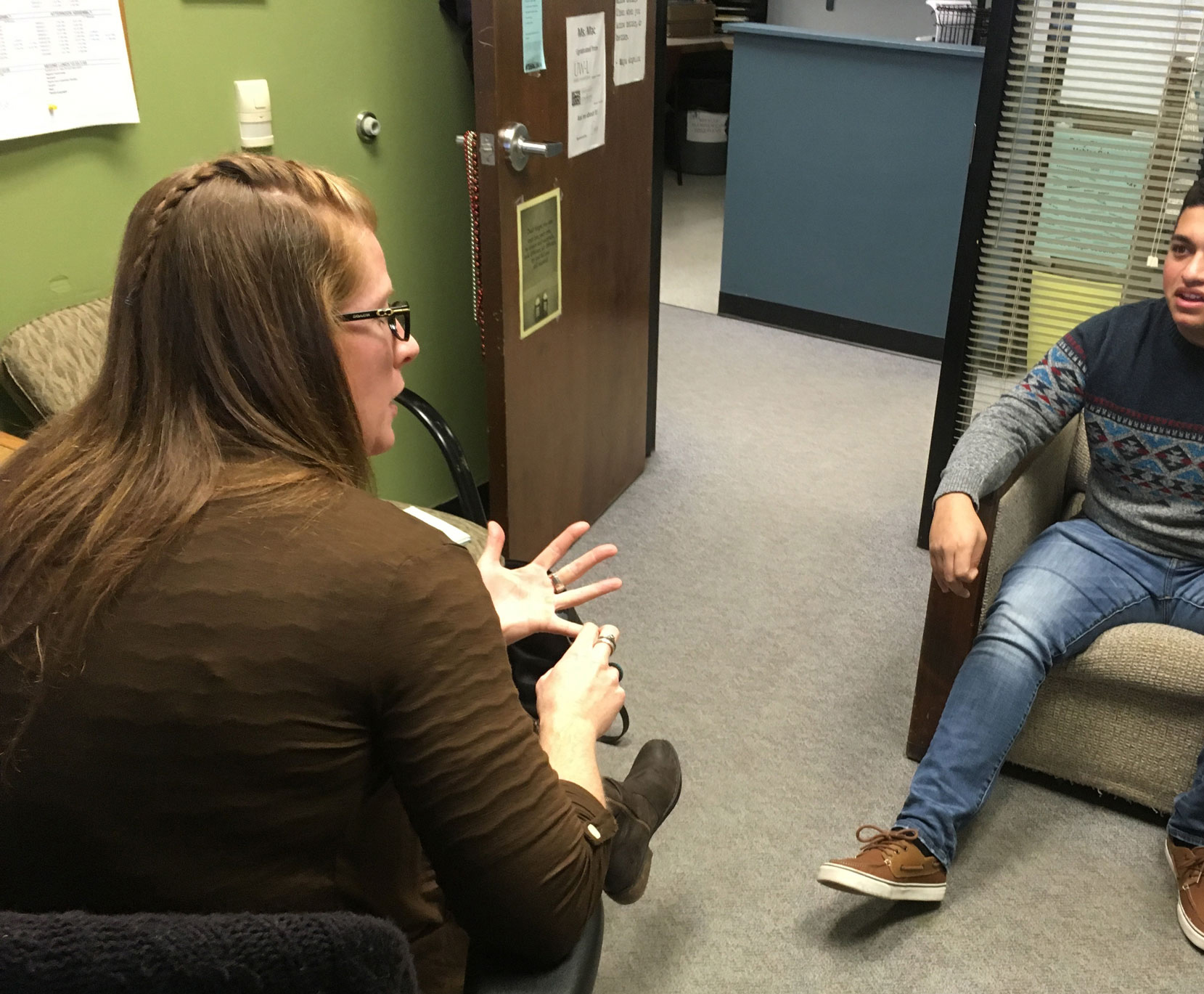
“Mamá, ¿sabe en dónde puedo encontrar pasantías?” (“Mom, do you know where I can find internships?”), I ask.
“No sé … pregúntale a la consejera de escuela o a tu maestra. Ellas te van a poder ayudar más porque tienen más información.” (“I don’t know… ask your school counselor or your teacher. They will be able to help you more because they have more information”), she replies.
My mother didn’t attend high school or college, so she has limited knowledge about college and career readiness. Most parents in my community, Salinas, California, are in the same position.
Here, 79.3 percent of people are Hispanic or Latino, 37.3 percent of residents are foreign-born and just 13.3 percent of adults have earned a bachelor’s degree or higher.
At school, students struggle to find college and career resources. It is common to hear students complain about slow responses from the guidance office. As a junior in high school, my lack of access to quality college and career information has been particularly stressful. Although I’m researching my options, I fear that it’s not enough.
In my community, many students aspire to careers in nursing, agriculture and education. It’s clear why: Agriculture provides 24.1 percent of all local jobs, while education, social assistance and health care provide 18.2 percent. Students have the most exposure to those jobs.
Related: How to raise rural enrollment in college? Go local
Although these are perfectly good professions, they are a narrow range of career opportunities, and many students don’t know about other options. Recently, one of my teachers showed us a video about a day in the life of a software engineer. In our discussion, most students said they had never considered such a career a possibility.
A study done by the Organisation for Economic Cooperation and Development found that many students in the 21st century have aspirations for careers that were created in the 19th or 20th centuries. This means that many students have minimal knowledge of new careers and the skills needed to pursue them. The students who do aim for these new careers tend to be more affluent.
Many students have minimal knowledge of new careers and the skills needed to pursue them.
In Salinas, where many students will be first-generation college students, better awareness of these careers is needed. Google is a big help for those of us looking for possible careers, but having an opportunity to see the jobs in practice and getting support in navigating our career search journeys would be a bigger help.
Schools and community organizations in Salinas should invest more in developing college and career readiness. This could be done through career fairs and schoolwide college visits.
For example, in the Natchez-Adams School District in Mississippi, students have the opportunity to get training in different career paths at the Fallin Career & Technology Center. Students can take courses there in digital media technology, health science and health teaching, among others.
Natchez-Adams high school students also have a program through which they can get a head start on higher education. They can enroll at their local community college and take classes to get associate degrees. This pathway is strongly encouraged, and 75 percent of students in the 2021 graduating class of the Natchez Early College Academy received associate degrees this way.
I believe high schools in Salinas and elsewhere should implement similar programs to help students feel more prepared as they enter college and the workforce. That would be the first step, but promoting the programs would be the second. Students would be grateful for it.
I encourage the Salinas Union High School District and other districts to consider creating more programs that will help students get not only high-quality college and career information but also high-quality assistance for their future endeavors.
Carolyn Dorantes is a junior at Rancho San Juan High School. She writes for the Voices of Monterey Bay and the Student Voice Journalism Fellowship.
This story about college and career advice was produced by The Hechinger Report, a nonprofit, independent news organization focused on inequality and innovation in education. Sign up for Hechinger’s newsletter.